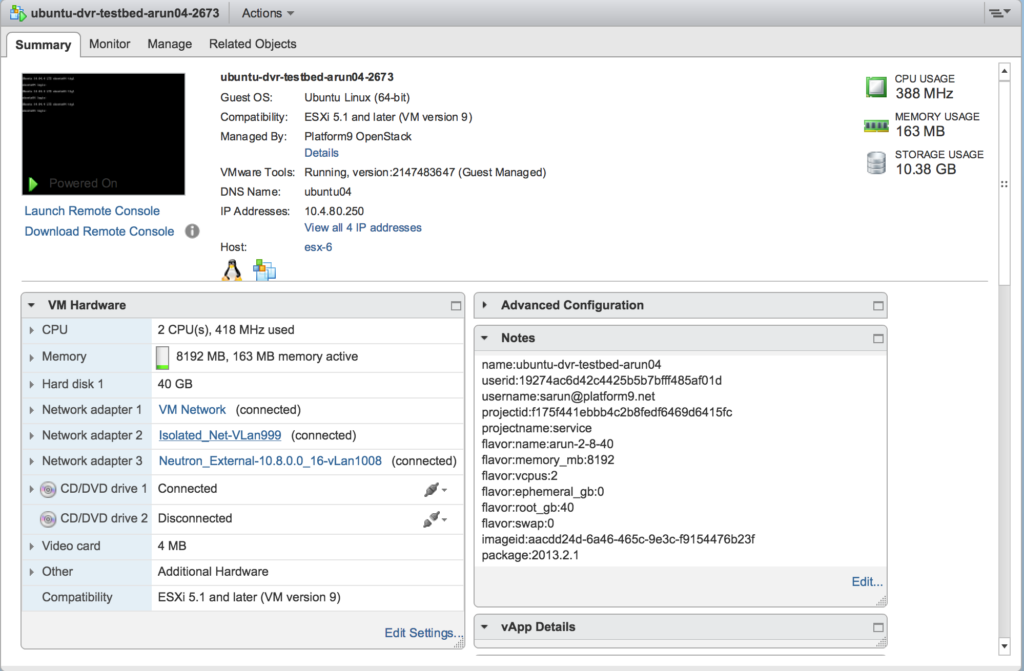We’re very excited to announce a new release this week of Platform9 Managed OpenStack, our SaaS-based OpenStack private cloud offering! With this release, we have upgraded all components to run their respective OpenStack Liberty versions.
Those familiar with OpenStack understand the pain involved with not only setting up an entire OpenStack cloud, but also managing the periodic upgrades. This release illustrates one of our core value propositions: zero-touch upgrades! With Platform9, our customers moved from OpenStack Juno (our previous version) to OpenStack Liberty overnight, completely seamlessly to their workflows, with absolutely no additional infrastructure planning or investment!
At Platform9, we make it a priority to listen to our customers. This release comes with a slew of features that reflect our customers’ inputs, some of which come by virtue of the respective component upgrades, while others are Platform9 additions built on top of the fantastic foundation that OpenStack Liberty affords us. Here’s a quick overview of what you’ll find.
OpenStack Liberty Enables Single Sign-On Support
The OpenStack Liberty version of Keystone adds enhanced support for configuring per-identity provider WebSSO. At Platform9, we are taking advantage of this with support for single sign-on, specifically by providing an integration path with Okta, a SAML-based cloud identity provider! This integration addresses a key ask from our customers, who would like to leverage their existing identity provider infrastructure within their OpenStack private cloud. You can read more about this in our detailed support article here.
Support for vmxnet3 Network Adapter in VMware
Support for vmxnet3 Network Adapter in VMware has been another frequent ask from our customers, and it is now available for use! The vmxnet3 virtual NIC virtualizes a 10 GB NIC as opposed to the 1 GB E1000 virtual NIC, resulting in a major performance improvement.
The mechanism for using this is to add a specific metadata key to the image you’d like to provision using the vmxnet3 adapter:
glance image-update --property hw_vif_model=VirtualVmxnet3
After this, any VMs being created from that image will always use vmxnet3 adapters to connect to the selected networks!
VM Annotations to Identify OpenStack VMs in vCenter
Because Platform9 supports brownfield operating environments, our VMware customers have often ask us for a way to identify their instances that are created via OpenStack so that they can be distinguished from the other workloads they may have running in the same vCenter. This is now possible with our new release.

This is a useful feature because it allows users to correlate – and search for – VMs that are created via OpenStack within their vCenter environment. Since Platform9’s vSphere support includes the ability to snapshot instances directly to vSphere templates, we extended this feature to also provide similar tags for snapshotted templates! These additional metadata fields allows administrators to effectively delineate, and track, the OpenStack-specific workloads within their vSphere system.
Optimizations for handling multiple connections
Given the architecture of Platform9’s SaaS offering, there are multiple connections spawned between data-plane components on customers’ datacenters, and their Platform9 OpenStack control plane SaaS layer. This can sometimes disrupt customer outgoing protection rules that limit the number of connections made. To address this, we added a new feature to collate these connections into a single channel for customers who need such a solution!
These are just a few of the features introduced as part of the latest Platform9 Managed OpenStack release. Reach out if you would like to know more!!




